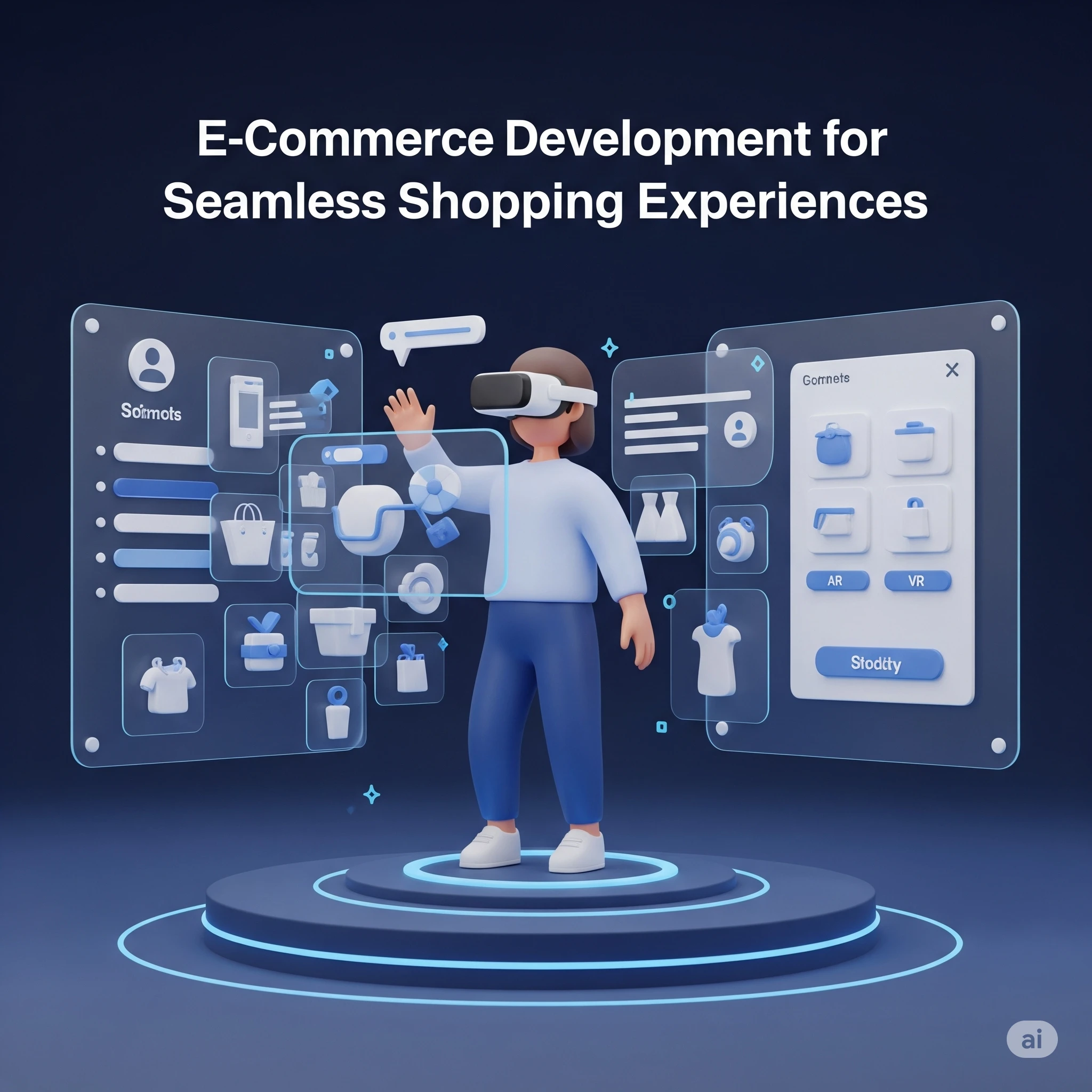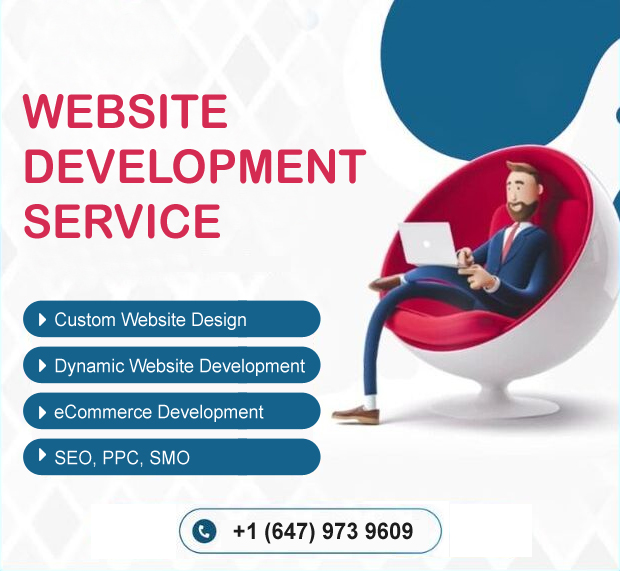E-commerce has transformed the way consumers shop and businesses operate. From startups to multinational corporations, online selling is no longer optional—it’s essential. Seamless shopping experiences are now the benchmark for customer satisfaction and loyalty in the digital marketplace.
- Understanding Seamless E-commerce
1.1 What Is a Seamless Shopping Experience?
A seamless shopping experience means the entire customer journey—from landing on the site to completing a purchase—is smooth, intuitive, and frictionless.
1.2 Why Seamlessness Matters
Shoppers expect convenience. A laggy interface, confusing checkout process, or poor mobile responsiveness can lead to abandoned carts and lost sales. Seamless experiences drive higher conversion rates, better customer retention, and improved brand perception.
- Foundations of a Great E-commerce Platform
2.1 Choosing the Right Technology Stack
The development stack must support scalability, security, and speed. Popular stacks include:
- LAMP (Linux, Apache, MySQL, PHP)
- MERN (MongoDB, Express, React, Node.js)
- MEAN (Angular instead of React)
2.2 Platform Options
Depending on the business size and needs, developers may choose:
- Shopify – Easy to set up, best for small to mid-size businesses
- Magento (Adobe Commerce) – Powerful, flexible, suitable for large-scale operations
- WooCommerce – Great for WordPress users and small businesses
- Custom-built platforms – Fully tailored solutions
- UI/UX Design for Seamless Navigation
3.1 The Power of First Impressions
A clean, modern interface builds trust instantly. Design should align with brand identity and encourage interaction.
3.2 Clear Navigation
Menus, categories, and filters should help users find what they need quickly. Mega-menus, breadcrumbs, and advanced search functionality enhance navigation.
3.3 Mobile-First Design
With most traffic coming from mobile devices, responsive design is essential. Mobile-first ensures the site is built for smaller screens from the ground up.
3.4 Fast Load Times
Speed is critical. Pages should load in under 3 seconds. Optimizing images, minifying code, and leveraging CDN can improve performance.
- Personalized Shopping Experiences
4.1 Smart Recommendations
Using AI and machine learning, e-commerce sites can suggest products based on browsing behavior, purchase history, or demographics.
4.2 Dynamic Content
Personalized banners, landing pages, and offers enhance engagement and increase conversion rates.
4.3 Custom Pricing and Discounts
Offering special prices to repeat customers, subscribers, or specific demographics makes users feel valued.
- Product Pages That Convert
5.1 High-Quality Images and Videos
Visuals are key in online shopping. Use multiple images, 360-degree views, and product demonstration videos.
5.2 Compelling Product Descriptions
Descriptions should highlight benefits, specifications, and use cases. SEO-optimized content improves visibility.
5.3 User Reviews and Ratings
Customer feedback builds trust. Implementing verified reviews can boost credibility and drive sales.
- Smooth Checkout Experience
6.1 Guest Checkout Options
Forcing account creation can deter purchases. Allowing guest checkout removes a major barrier.
6.2 Multiple Payment Methods
Offer various options like credit/debit cards, UPI, PayPal, wallets, Buy Now Pay Later (BNPL), and EMI.
6.3 Security and Trust Badges
SSL certificates, trust seals, and secure gateways reduce cart abandonment by reassuring users.
6.4 Transparent Shipping and Return Policies
Clearly display shipping charges, delivery time, and return policies. Uncertainty can lead to drop-offs.
- Mobile Commerce (M-Commerce)
7.1 Rise of M-Commerce
Mobile shopping is dominating the digital space. A mobile-optimized store is no longer a luxury—it’s a necessity.
7.2 Mobile App Development
Developing native apps enhances the shopping experience through push notifications, personalized features, and faster navigation.
7.3 Progressive Web Apps (PWA)
PWAs combine the benefits of websites and mobile apps—offering speed, offline access, and app-like features in a browser.
- SEO and Performance Optimization
8.1 On-Page SEO Techniques
Use keyword-rich URLs, title tags, meta descriptions, alt texts, and structured data to improve search engine visibility.
8.2 Technical SEO
Implement clean URL structures, fast load times, mobile responsiveness, and secure browsing (HTTPS).
8.3 Site Performance Auditing
Regularly test the site using tools like Google PageSpeed Insights and GTmetrix to identify and resolve performance issues.
- Integrations That Enhance Experience
9.1 CRM and Email Marketing
Connecting platforms like Mailchimp, HubSpot, or Klaviyo allows for behavior-based email campaigns.
9.2 Inventory and Order Management
ERP integrations help track stock, automate reordering, and manage logistics seamlessly.
9.3 Chatbots and Customer Support Tools
AI-powered chatbots assist customers in real-time, reducing the need for human intervention and improving service quality.
- Analytics and User Behavior Tracking
10.1 Google Analytics & Heatmaps
Understanding user behavior helps optimize page layouts and marketing campaigns.
10.2 Conversion Rate Optimization (CRO)
Analyze and test elements (CTAs, headlines, layouts) to improve conversion rates using A/B testing.
- Security and Compliance
11.1 Data Protection & Encryption
Protect customer data using strong encryption protocols and GDPR compliance.
11.2 PCI-DSS Compliance
Ensure your platform meets payment security standards, especially when storing or processing credit card information.
- Scalability and Maintenance
12.1 Planning for Growth
Design architecture that can handle traffic spikes and increased product volumes without crashing.
12.2 Regular Updates and Bug Fixes
Routine maintenance ensures your site remains secure, compatible, and fully functional.
- Post-Purchase Engagement
13.1 Order Tracking and Notifications
Automated updates through SMS, email, and push notifications improve transparency and customer satisfaction.
13.2 Feedback Collection
Encourage users to review products or services to build community and credibility.
13.3 Loyalty Programs
Rewarding repeat purchases builds long-term customer relationships.
- Social Commerce and Omnichannel Integration
14.1 Selling on Social Media
Platforms like Instagram, Facebook, and Pinterest offer native shopping features. Integration increases brand reach.
14.2 Omnichannel Experience
Unifying online, mobile, and offline channels ensures customers receive a consistent experience across all touchpoints.
- Internationalization and Localization
15.1 Multi-Language and Multi-Currency Support
Attract global customers by offering content and payment in their native language and currency.
15.2 Local Shipping and Tax Rules
Implement region-specific logistics and legal compliance features for smoother global operations.
- Future Trends in E-commerce Development
16.1 Voice Commerce
With voice assistants on the rise, optimizing for voice search and enabling voice-based shopping will be crucial.
16.2 Augmented Reality (AR)
AR features allow customers to “try before they buy”—enhancing confidence in purchases.
16.3 AI and Predictive Analytics
AI helps personalize user journeys, predict buying behavior, and automate inventory management.
16.4 Blockchain and Decentralized Commerce
Blockchain can increase transparency, reduce fraud, and enhance security in transactions.
Conclusion: The Road to E-commerce Success
Seamless shopping experiences don’t happen by accident—they are the result of careful planning, smart design, user-focused development, and constant optimization. In today’s highly competitive digital landscape, brands that prioritize smooth, enjoyable, and secure online shopping journeys will outpace the competition and build lasting customer loyalty.


Leave a Reply